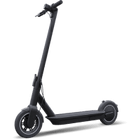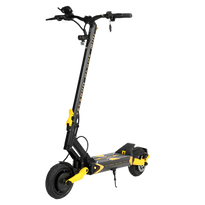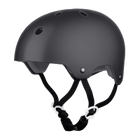New Zealand Electric Scooter Regulations You Need to Know

Electric scooters are compact, quiet, environmentally friendly, and fun. Commuting by e-scooter is so liberating that it can genuinely change your life! But they’re not all play, and every day more people are asking themselves, could this work for me? The existing electric scooter regulations give some guidance about e-scooters and where you can ride them, but it is easier than the rules suggest. Privately owned electric scooters are a welcome addition to Auckland roads for their positive effects on reduced congestion and emissions. So, let’s look at the rules and how they apply to e-scooter riders currently.
First of All, Are Electric Scooters Legal in New Zealand?
E-scooters are legal in New Zealand, offering commuters incredible flexibility and freedom! Following NZTA regulations, electric scooters must be equipped with the same features as bicycles: lights, brakes, reflectors, and a bell. If you plan to purchase an e-scooter, ensure all necessary e-scooter parts are included. Of course, you don’t have to worry about this at Freed Electric Scooter, as all our scooters are kitted out to be legal and safe on the road!
Do I Need a License to Operate an Electric Scooter?
In New Zealand, you don’t need a driver’s license to ride an e-scooter on the road. Electric scooters are low-powered vehicles that do not require registration or a driver’s license to operate. To classify as a ‘low-powered vehicle’, electric scooter wheels must not exceed 355mm nor motors a maximum power output over 300W.
The maths to work this out involves the battery voltage and controller amperage, not just the watt rating of the motor. When purchasing from Freed Electric Scooters, you can rest assured that we can provide the correct advice on all our products.
If you are purchasing a scooter with a high power output, check out the rules yourself, as in the end, the responsibility for correct and legal use falls on the owner.
Where Can I Ride E-Scooters in NZ?
You can ride e-scooters almost anywhere; on pavements, shared paths, and the road—not bad for everyday commuters! It is worth noting that dedicated cycle lanes are technically reserved for cyclists. So, if you are using these, please ensure you give due consideration to all cyclists, as we are guests in their space.
Riding an electric scooter on the Road
You can legally ride an e-scooter on the road; however, you must respect the speed limit and all the usual road rules.
While using an e-scooter on the road, you should always be aware of your surroundings and other road users. Drivers may not understand your intentions and may not see you if you are riding in traffic. Ride defensively and considerately, and be aware of your surroundings. Freed recommends that riders wear extra lights on the handlebar and helmet to maximise visibility to other road users.
Can I take my scooter on public transport?
The rules here vary. Trains, yes. Buses will allow smaller scooters on board as long as they are folded. On occasion, you may need to wait for the next bus if it is full, but here in Auckland, that happens with or without a scooter. Larger scooters can be a bit hit-and-miss. Currently, e-scooters are permitted on buses at the driver’s discretion. We have it on good authority that some clear guidelines will be published soon. Until then, the Freed team ride the bus with their scooters and can give you the best advice on which scooters drivers are happy to have on board.
Ferries do allow scooters. However, many are introducing limits on numbers, so it pays to be well-organised!
What Are the Rules for Electric Scooters?
Here, we explore a few rules and recommendations around e-scooter use in New Zealand:
- Helmets: Wearing safety helmets is highly recommended, but for some completely mad reason, not yet legally required. At Freed e-scooters, we advise full-face helmets for maximum protection.
- Driving on the road: You are required to operate as near as practicable to the curb when driving on the road. However, this does not mean you need to ride in the gutter. Do not endanger yourself. Give parked cars enough room to open a door. Be prepared to stop to let traffic pass if that keeps you safe. If you cannot ride safely on the road, use the pavement. And you really should only use pedestrian cross signals if you dismount and walk your scooter across.
- Riding speed: Maintain a safe speed. Obey the speed limit. Ride at a safe speed for you and other road and footpath users.
- Giving way on footpaths: Give way to pedestrians and drivers of mobility devices when using footpaths. The accepted speed limit on the footpath is 15km.
Become a Responsible E-scooter Rider and Make Commuting a Breeze!
If you’re considering buying an e-scooter, it’s worth familiarising yourself with the electric scooter regulations and rules for riding in your area. We hope this article has given you the information you need to navigate the streets like a pro. Feel free to get in touch if you have more questions.
We can guide you on the ins and outs of your e-scooter. As one of the leading electric scooter shops in Auckland, we offer the best e-scooters and electric scooter servicing in the market. Our team can guide you through the specs and other technical information you need to know to ride and operate your e-scooter on the road safely.
What are you waiting for? Make your commute a breeze with an electric scooter from Freed today.






